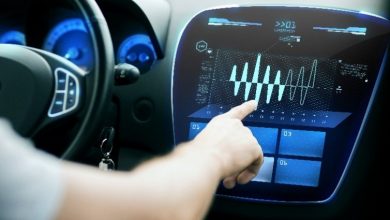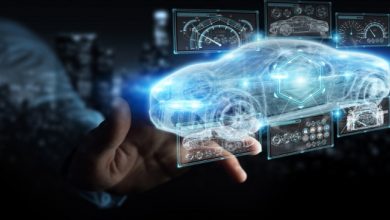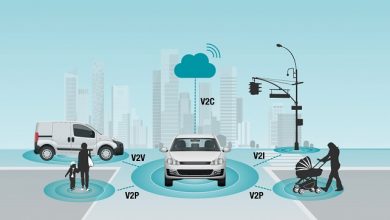Paradigm Shift of Skill Development in the Automotive Industry

360 Degree Digitization of Automotive Industry
The concept of 360 Degree Digitization is an extension of industry 4.0, where the entire value chain of product design, development, testing, certification, sales, business promotion, after-sales, and customer engagement is digitized. Digital Twin simulation tools and automated testing tools accelerated this transition, helping in cost reduction and Time to Market. With the digital twin, we can now predict the behaviour of a new car throughout its life cycle. Test automation tools significantly impacted saving time and handling the complexities of multiple technologies and tools in the development environment. This transition brings the concept called ‘software-defined cars, like the ‘software-defined things’ emerging in today’s connected smart world.
Quality vs. Risk-Based Approach
Traditionally, the automotive industry has got one of the best quality processes to ensure that every car produced is consistent with quality and reliability. Along with Six Sigma certifications, we also saw the introduction of the Automotive Spice model getting implemented during the last couple of years. But with the increasing use of electronics and software, we see more challenges to Auto OEMs from the risks originating from ECU (Electronic Control Units) failures. We also found the assurance levels gained by quality models are not fully addressing the design, development, and testing challenges of electronic components and embedded software-based systems.
Software – A challenge and opportunity
Software usage is exponentially growing due to increasing demand from customers to have more functionalities, comforts, and ease of driving. Many modern cars have a code size more than in an Airbus 380! Electric and conventional IC engine models are competing on this front. As the fully level 5 autonomous cars race is catching up, the software will be the central focus in modern cars. Of course, the hardware complexities are equally catching up as many chip manufacturers have already implemented AI/ML algorithms with better computing power at the hardware level. Centralized hardware architecture also reduces the number of ECUs and brings better power optimization, especially in electric vehicles.
We all know the advantages and the flexibilities software brings in. With a software update, the car could behave in a totally different way, giving customers the feeling of a new car, something OEMs could never promise in the olden days. However, increased software usage also brings in additional safety and security concerns.
Industry came together to address this issue to develop standards and regulations. The underlying principle of most of these discussions was how to bring in risk-based thinking in the design, development, testing, and certification of automotive systems. Based on the impact of failures, each subsystem is classified from high to low risks, following systems engineering’s recommended risk assessment process. In fact, the aerospace industry used to follow these ARP(Aerospace Recommended Practices) processes for several decades, as they got their safety certification process matured over a period to meet stringent global safety regulations.
Governments worldwide came together and started working together with global standards organizations like ISO, IEC, and professional bodies like SAE. We saw a new series of standards like ISO 26262 for functional safety and ISO/SAE 21434 for cyber security completely changing the industry. Risk assessment processes fully drive these standards to address safety and security failure implications. The new EU WP 29 cyber security regulation would accelerate this transition as governments have identified automotive cyber security as an immediate national security issue. Hence there is direct pressure on the industry to act now.
Skills Development – the immediate priority for the industry
As the industry is undergoing a massive transformation, we need the right skills for safe, secure, connected, and intelligent car development by strictly following the existing automotive quality standards and emerging emission and sustainability regulatory guidelines. The majority of our existing automotive industry skills initiatives are designed for our traditional cars in mind, where the focus is more on mechanical, engine technologies and, to some extent, simulation techniques. We are now seeing the shift in the outlook of CXOs at OEMs, Tire 1 and Tire 2 players towards this new skills paradigm, even though the majority of them come with traditional mechanical background and mindset. Reskilling the existing workforce in design, development, shopfloor, showrooms, and maintenance workshops will be the biggest challenge on their table. For every system we develop, like ADAS, BMS, Telematics tec would need an array of skills ranging from quality, safety, security, AI/ML, testing, certification, regulation etc.
Skills upgrade for all in the ecosystem – A need of the hour
While we focus our energy on reskilling the existing workforce and upgrading the curriculum in our universities, every other stakeholder in the industry is also essential. We need to engage industry regulators, standards bodies, test facilities, related ministries, skills councils, media, professional and industry bodies, along academia.
Industry and Academia leaders should spread this message to achieve scalability in our skilling and reskilling initiatives. Driven by my passion for skilling in industry and academia, personally as well as through LDRA’s skill development programs, I have been involved with many initiatives. I would be keen to work with like-minded organizations and individuals to achieve this goal together.
Author:

Shinto Joseph
Director – Southeast Asia Operations
LDRA
Shinto Joseph is currently working as Director – Southeast Asia Operations at LDRA Technology Pvt. Ltd. With over 24 years of experience in handling Embedded Software Life Cycle solutions, he has built many teams and companies in the embedded systems field. Working with cross-border delivery teams, technology partners, and industry regulators in the defence, aerospace, automotive, industrial, medical, rail and nuclear sectors are his unique advantage. Today he concentrates on creating a healthy ecosystem in the mission, security and safety-critical systems domain in the Southeast Asia region.
Published in Telematics Wire





